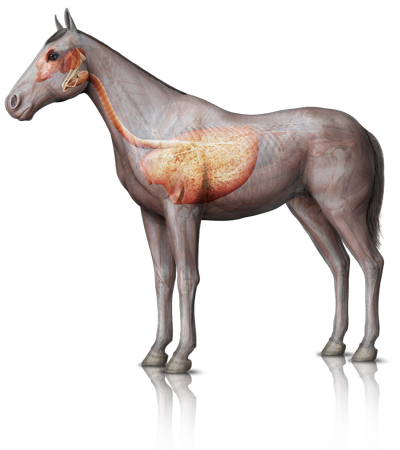
The respiratory system functions to carry vital oxygen into the body and expel carbon dioxide, a metabolic waste, out of the body. Functionally, the respiratory system is divided into two portions: the upper and lower airways. The upper airway begins as air enters the nasal passages and mouth and flows through the trachea (windpipe). The upper respiratory tract warms, filters, and moisturizes inhaled air. As air continues down the trachea, it enters the lung lobes: the lower respiratory tract. Within the lungs, inhalation brings vital oxygen to the blood; exhalation removes carbon dioxide from the body.
Respiratory disease represents a common cause of poor performance in horses. Physical signs associated with respiratory conditions may be subtle in the initial stages of illness. Indications of respiratory disease include: fever, nasal discharge, coughing, noisy breathing, exercise intolerance, poor athletic performance, and labored breathing. Disorders of the respiratory system may involve the upper and/or lower airways. Physical examination findings aid in the localization of the disease process.
Common abnormal conditions associated with the equine respiratory system include :
- Air flow interference : Chronic Obstructive Pulmonary Disease (COPD), laryngeal hemiplegia, foreign bodies, tumors
- Exercise Induced Pulmonary Hemorrhage
- Guttural Pouch Disease: Empyema, Mycosis, Tympany
- Infectious :
o Viral: Equine Herpesvirus, Equine Influenza, Equine Viral Arteritis, Rhinovirus
o Bacteria: Streptococcus equi (“Strangles”), Rhodococcus equi, Streptococcus zooepidemicus
o Fungi: Aspergillus
o Parasites: Ascarids
- Paranasal sinus disease : Sinusitis, Ethmoid Hematoma
- Pleuropneumonia
- Toxins : Perilla ingestion, Silicosis, Pyrrolizidine Alkaloids, Smoke Inhalation
Guttural Pouch
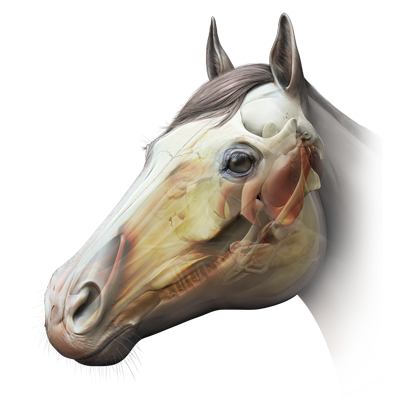
Unique to the horse family are air-filled cavities, known as guttural pouches, which connect the back of the throat to the middle ear cavity. The guttural pouches help equalize pressures around the ear drum. Guttural pouch disease commonly causes a nasal discharge; it may cause swallowing problems when the head is down or noisy breathing. Causes of guttural pouch disease include:
- Empyema: accumulation of infection caused by upper respiratory infections
- Mycosis: fungal infection, commonly Aspergillus
- Tympany: anatomical defect causing air trapping within the guttural pouch
Larynx
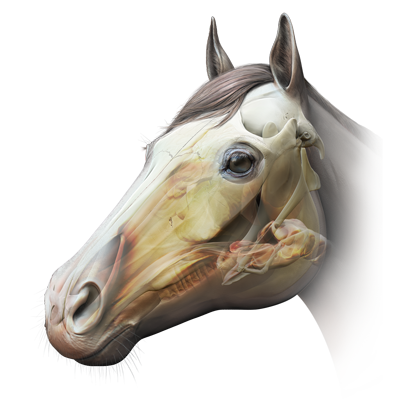
The larynx is a tube of cartilages that form the throat and contain the vocal cords. Laryngeal inflammation manifests as poor performance and noise on inspiration during exercise. Horses with this condition are called “roarers”. The most common cause of roaring (also known as stridor) is weakness or paralysis of the arytenoid cartilage, typically on the left side. Because the arytenoid cartilage does not move normally, it impairs normal airflow, which is of particular concern during activity.
Lungs
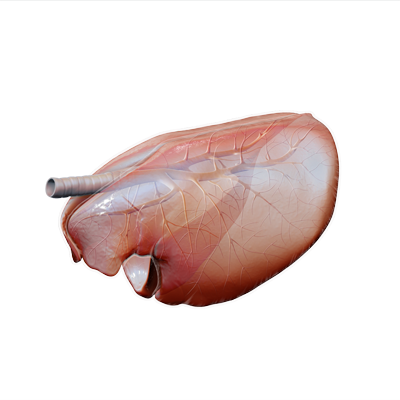
Inhaled air travels from the upper airways (nasal passage and trachea) to the lower airways of the lungs. Deep in the lung tissues, inhaled oxygen enters the blood stream to be exchanged with carbon dioxide, a metabolic waste that is exhaled out of the body. Horses with lung disease may cough, have labored breathing, and poor athletic performance. Radiography (x-rays) allows your veterinarian to visualize the lungs and diagnose problems such as pneumonia, chronic obstructive pulmonary disease (COPD), and cancer.
Sinus
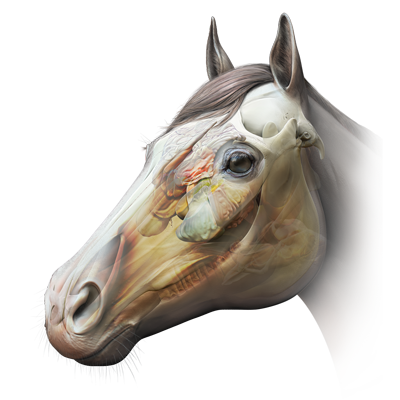
Built within the skull are bone encapsulated air pockets known as sinuses. The sinuses moisten inhaled air and trap particles within secreted mucous. Horses with sinus discomfort develop a nasal discharge on the affected side. Sinus problems occur with bacterial and viral infections (e.g.: Equine Herpesvirus), allergies, cysts, trauma, and tooth problems; bleeding from the nasal passages suggests an ethmoid hematoma.
What's Next
Call us to schedule an appointment
Meet with a doctor for an initial exam.
Put a plan together for your pet.

